Immerse yourself in Burgos's vibrant flavors and uncover hidden culinary gems with our expert insider guides. Plan an unforgettable trip today!
Read more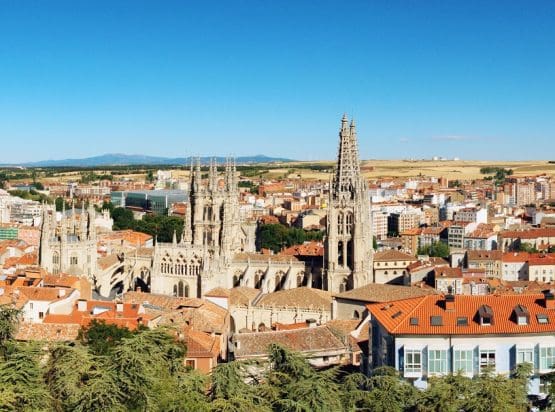
EXPLORE ALL OUR CASTILLA Y LEON WINE REGIONS GUIDE
Last updated: October 11, 2024
Few people remember León (formerly Tierra de León ) when they list the great wines of northwestern Spain. Yet this expanding region is increasingly making waves in sommelier circles, producing unique reds from the indigenous Prieto Picudo variety. Awarded DO (appellation) status in 2007, local winegrowers have also branched into white production recently, while the delicious rosados (rosés) have set a new benchmark. After a slow start, León is beginning to take shape as a real alternative to the more famous names of Castilla y León. It deserves closer inspection.
Discover more about Spanish Wine
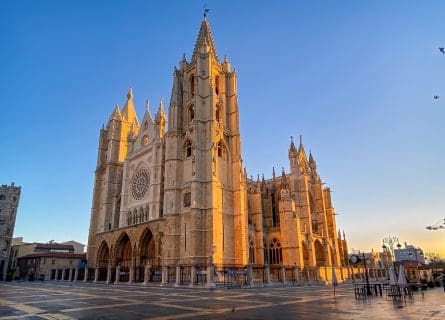
Phoenician influence in pre-Roman Spain gave rise to the Iberian Peninsula’s first cities in the 8th century BC. During this era, iron replaced bronze for the first time, and trade between Spain and the Levant flourished. However, we cannot be sure which civilization should be credited with planting the first vines or developing a sophisticated winegrowing industry around the grape.
However, historians are certain that the Romans conquered the peninsula in the 3rd century BC, building a mighty Western Empire that stretched from North Africa to England. Their rule endured for over 500 hundred years until the empire collapsed due to a combination of overreach and hubris.
Roman authority crumbled after the Visigothic king Alaric I sacked Rome in 410. This sent a message to rival civilizations that the peninsula was ripe for a change in leadership. After several bloody skirmishes, the Visigoths (encouraged by the Hispano-Roman nobility) claimed Toletum (Toledo) as their capital.
Yet Andalucia fell to Islamic invaders in AD 711 – the forces of Tariq soon conquered most of Spain and Portugal. In 756, Abd ar-Rahman declared himself the emir of Al-Andalus, a kingdom that would endure, in one form or another, until the 15th century. Its most feared general, Al-Mansur, raided the cathedral of Santiago de Compostela in the 10th century, transporting the bells (via enslaved Christians) to Cordoba, which were used as gigantic oil lamps in the Mezquita.
Revival of Viticulture
However, after Toledo fell to the Catholic Monarchs in 1085, the momentum shifted decisively in favor of the Christians. During this period, written records first referenced viticulture in Castilla y León; religious orders were attracted to the area due to its importance to the pilgrimage route of Santiago de Compostella. Meanwhile, Al-Andalus collapsed into several small kingdoms (Taifas), and its erstwhile capital, Cordoba, was retaken by Fernando III in 1236.
By the late 15th century, every corner of the peninsula was back under Christian control. Spain’s other big break was Columbus’ discovery of the Americas in 1492. Galleons disgorged vast cargoes of gold and silver at El Arenal in Seville, although the Habsburg monarchs sadly wasted much of this newfound wealth on futile wars.
Nevertheless, the 17th and 18th centuries were a time of great artistic and cultural expression, while new industries flourished under the Bourbon dynasty.
Unfortunately, the vineyards south of León were devastated by the phylloxera louse in the late 1800s. In the aftermath, growers replanted varieties (secured to American rootstock) that would offer a generous yield. As a result, the area’s reputation declined significantly in the 20th century as producers set their stall on bulk wine production. Yet León rebounded in the early 2000s, with the emerging generation determined to return to quality winemaking. Initially known as Tierra de León, the moniker was shortened to “León” in 2019.
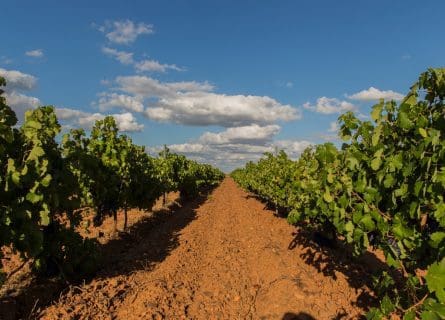
The northwestern corner of Castilla y León is renowned for its hauntingly beautiful landscape: vineyards carpet an undulating plateau shadowed by mountains that rise up in the north towards Asturias. Just over 3,000 square kilometers of terrain are under vine, planted to a range of red and white varieties.
Located south of León city, the appellation has alluvial terroir that balances drainage and moisture retention; brown rock fragments line the topsoil, while limestone deposits are found in the stratum. Vine roots can penetrate the top layer relatively easily and access vital water supplies.
Indeed, water can be scarce in the barren plains of Castilla y León – particularly in the summer. The region’s continental climate is exacerbated by a chain of mountains that prevents any maritime influences – and welcome moisture – from reaching León. Winters are cold, and summers are hot: temperatures of 104 degrees in July and August are not uncommon.
Role of Altitude
However, vines are planted between 750 and 800 meters above sea level. At these altitudes, the temperature drops significantly in the evening as heat escapes quickly. This is the most important ingredient in the local quality equation—without diurnal temperature variation, growers would struggle to keep excessive ripeness at bay.
León Growers have long focused on a very niche variety: Prieto Picudo. Over 70 percent of the total acreage is planted to this esoteric gem – it is undoubtedly one of Spain’s rarest grapes. But anonymity does not, of course, equate to mediocrity. On the contrary, its deep color, elegant tannins, and ripe acidity are greatly admired.
Like Tempranillo, the finest fruit is obtained from old bush vines, which are not trained on wires; old plants yield wonderfully concentrated berries, much to the delight of (quality-orientated) winegrowers everywhere. Under the appellation rules, these exceptional raw materials can be blended with Tempranillo; Prieto Picudo must account for a minimum of 60 percent of the finished article. Approaches to fermentation and maturation vary considerably, although many of the finest reds are typically aged in a certain percentage of new wood before release.
The Role of Mencia
A small volume of Mencia is also cultivated in the DO. Widely associated with Bierzo on the border with Galicia, the grape also shines in León, producing a more intense and concentrated expression. Again, a minimum of 60% must be used in the blend; red and rosé styles are made from Mencia and Prieto Picudo.
Aficionados of Spanish reds will be overly familiar with the classification framework employed: the Crianza, Reserva, and Gran Reserva hierarchy are alive and well in León. As ever, older Reserva and Gran Reserva wines are considered more prestigious and are, therefore, more expensive.
A small (but rising) amount of excellent white is also made here. The Consejo Regulador has stipulated that Godello, Albarin Blanco, and/or Verdejo should constitute at least 50 percent of the final blend. But it can be ‘topped up’ with Garnacha Blanc, Malvasia, and Palomino. An eclectic range of styles are produced, including very fresh and saline Verdejo/Garnacha blends and more structured wines that lean heavily on Godello’s natural brilliance. A touch of barrique never hurts the star grape of Valdeorras, adding weight and complexity to an already exemplary variety.
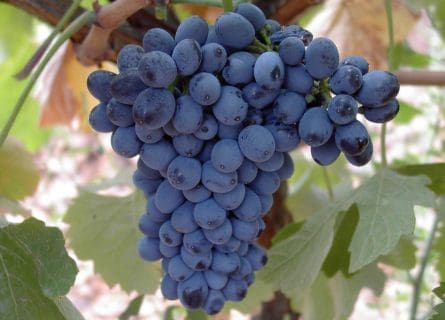
The theme of today in Castilla y León is up-and-coming DOs. Spain was obsessed with its growing size for a long time – the number of wineries, big brands, volumes exported, and penetration into new markets. These are all still important considerations. Yet the growth in specialty dining and the Millennial prioritization of quality over quantity has forced a rethink. The producers of bland industrial fodder for supermarkets may disagree. Still, some of Spain’s most exciting wines now emanate from regions that are chomping at the heels of the established classics.
León has been at the forefront of this revolution. It has completely thrown off the shackles of state-sponsored mediocrity from the Franco era, producing unique wines that showcase regional character, balance, and a sense of place. The timing is most opportune: curious oenophiles increasingly demand original flavors and new experiences, which León delivers.
Growing Appeal of León’s Wines
In Prieto Picudo, growers have mastered a singular expression of the local soils and landscape, producing fresh and aromatic wines celebrated for their red fruit flavors, minerality, and vibrant structure – the height of fashion.
Meanwhile, there is little sign that the appetite for aromatic and fresh whites is about to diminish; one suspects the acreage planted to white grapes in the DO will have doubled by 2030. And so, this once marginalized vineyard gains confidence and renown with each passing year. Trust us: León will amaze you.
Albarín Blanco is a rare light-skinned grape variety found in northwestern Spain, particularly in Castilla y León, Asturias, and Galicia. It is distinct from Albariño (Alvarinho), despite the similar names. The wine made from Albarín Blanco has an aroma that falls between Albariño and Gewürztraminer, with notes of ripe limes, lychee, mint, fig, and orange.
Discover the Allure of Grenache Blanc: Full-Bodied White Wine from Northeastern Spain. Experience the Richness of High Alcohol, Low Acidity Wines.
Find out moreDiscover Godello: Galicia's Exquisite White Wine Grape from Valdeorras. Unveiling the Delights of this Northwestern Spanish Varietal.
Find out moreMalvasia Bianca, a historical grape from Greece, now thrives in Sicily and the Aeolian Islands, producing unique sweet wines.
Find out morePalomino: The quintessential grape for Sherry in Andalucia, Spain's southern delight. Unearth tradition's essence in every sip.
Find out moreUnveiling Verdejo: Spain's Rueda Wine Region's Prized White Grape. Explore the Crispness and Lightness of this Dry White Varietal.
Find out moreGarnacha: Spain's Red Gem. Akin to Pinot Noir, it bridges terroir and winemaking, crafting captivating expressions.
Find out moreUnearth Mencía: Spain's captivating red gem. Original and alluring, it emerges from the shadows, captivating wine enthusiasts worldwide.
Find out morePrieto Picudo is a rare dark-skinned red wine grape variety grown in León, northern Spain. It produces light rosés and deeply pigmented red wines as a single-variety or blended with Tempranillo or Mencia. Typical Prieto Picudo wines have moderate tannins and good acidity and may benefit from oak aging.
Discover Tempranillo: Spain's iconic red grape. From Ribera del Duero to Toro, it yields concentrated wines. Explore its synonyms and unleash its prowess.
Find out moreThe local delicacy is cocido maragato: a casserole made from various meats, potatoes (introduced by conquistadors returning from the Americas), chickpeas, and noodles. It’s delicious and incredibly filling – one portion can easily satisfy a ravenous couple! But for many visitors, the tapas bars of nearby León city are the undisputed gastronomic highlight of Castilla y León. By night the maze of narrow streets and plazas is transformed into one big party as revelers drift from bar to bar, sampling the great and the good of this culinary institution. Try the mini sirloin streaks (solomillo) served with foie gras on toasted bread – heaven.
Guide to Gastronomy of Castilla y León: Read more

Immerse yourself in Burgos's vibrant flavors and uncover hidden culinary gems with our expert insider guides. Plan an unforgettable trip today!
Read more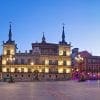
Immerse yourself in León's vibrant flavors and uncover hidden culinary gems with our expert insider guides. Plan an unforgettable trip today!
Read more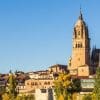
Immerse yourself in Salamanca's vibrant flavors and uncover hidden culinary gems with our expert insider guides. Plan an unforgettable trip today!
Read more
Immerse yourself in Segovia's vibrant flavors and uncover hidden culinary gems with our expert insider guides. Plan an unforgettable trip today!
Read moreIf you would like us to customize an exclusive luxury tour, contact us and let us know your travel plans. We offer luxury food and wine tours for private groups of a mininium two guests. In addition, all of our private, chauffeured tours are available year-round upon request.

